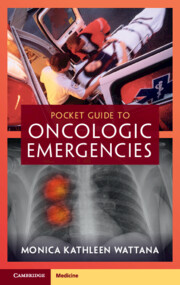Book contents
- Pocket Guide to Oncologic Emergencies
- Pocket Guide to Oncologic Emergencies
- Copyright page
- Contents
- Abbreviations
- Preface
- Chapter 1 Cancer Overview
- Part 1 Anticancer Treatment Overview
- Part 2 Pain and Palliative Care in the Emergency Department
- Part 3 Systems Based Overview of Cancer Complications
- Section 1 Cardiovascular System
- Section 2 Gastrointestinal System
- Section 3 Genitourinary System
- Section 4 Integumentary System
- Section 5 Lymphatic System
- Section 6 Nervous System
- Section 7 Respiratory System
- Index
- References
Section 3 - Genitourinary System
from Part 3 - Systems Based Overview of Cancer Complications
Published online by Cambridge University Press: 10 August 2023
- Pocket Guide to Oncologic Emergencies
- Pocket Guide to Oncologic Emergencies
- Copyright page
- Contents
- Abbreviations
- Preface
- Chapter 1 Cancer Overview
- Part 1 Anticancer Treatment Overview
- Part 2 Pain and Palliative Care in the Emergency Department
- Part 3 Systems Based Overview of Cancer Complications
- Section 1 Cardiovascular System
- Section 2 Gastrointestinal System
- Section 3 Genitourinary System
- Section 4 Integumentary System
- Section 5 Lymphatic System
- Section 6 Nervous System
- Section 7 Respiratory System
- Index
- References
Summary
Overview of genitourinary complications such as obstructive uropathy, percutaneous nephrostomy tube trouble shooting, electrolyte abnormalities, and gynecological surgical complications
Keywords
- Type
- Chapter
- Information
- Pocket Guide to Oncologic Emergencies , pp. 143 - 168Publisher: Cambridge University PressPrint publication year: 2023



